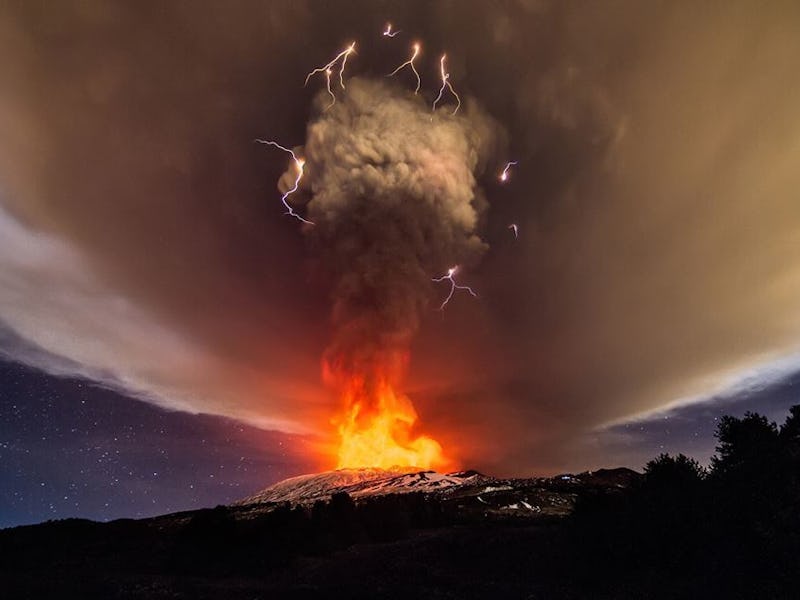Mount Etna Erupts With a Spectacular Show of Lighting
This is the first time in two years the tallest volcano in Europe has erupted.

The coast of Sicily got quite a show Thursday as Mount Etna (map), the tallest volcano in Europe, erupted in an awe-inspiring performance for almost an hour. While the volcano has been erupting for about the past 2.5 million years, this is the first time this level of activity has happened since 2013. The situation for the neighboring communities appears to be stable, apart for the heavy rain of ash that fell upon the neighboring cities of Messina and Reggio Calabria.
While the volcano itself is about 1,112 feet tall, the ash plume from Thursday’s eruption reached about two miles up into the sky. One of Mount Etna’s five craters, this one is called the Voragine crater, released a lava fountain that made it to a height of one kilometer.
But perhaps the most dazzling aspect of the eruption was the volcanic lightning that seemingly cracked overhead. While this sort of lightning was viewed as a mystery for many years, scientists now know that when particles from a compressed environment charge each other through friction — e.g. during the eruption — the energy becomes discharged when released, causing lightning bolts.
The key component to volcanic lighting is a large charge separation between two masses — when that charge separation is big enough, it creates a path of ionized air, and conducts electricity.
The volcanic activity in this part of Italy is because the African tectonic plate collides with the Eurasia plate. Despite the activity of Thursday, things are seemingly back to normal for Mount Etna — save for a single white plume still rising overhead.